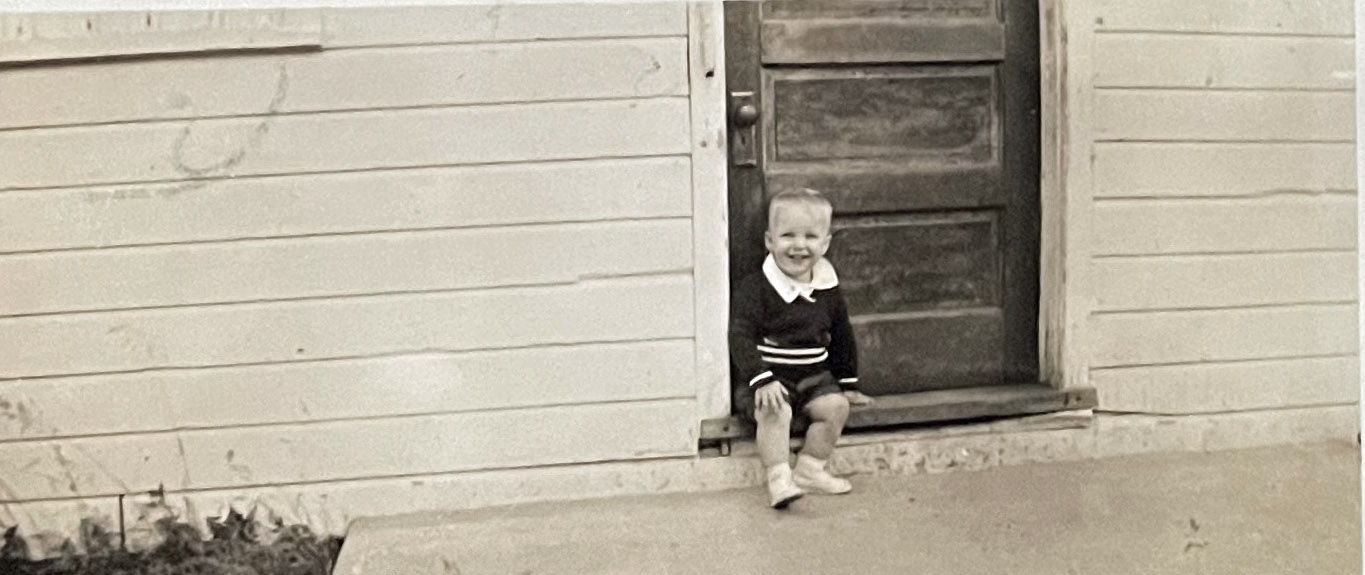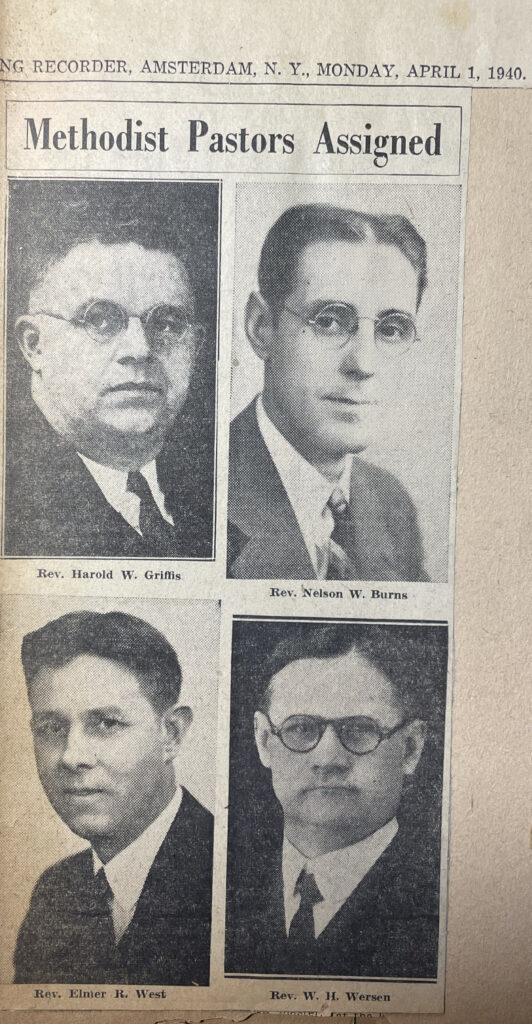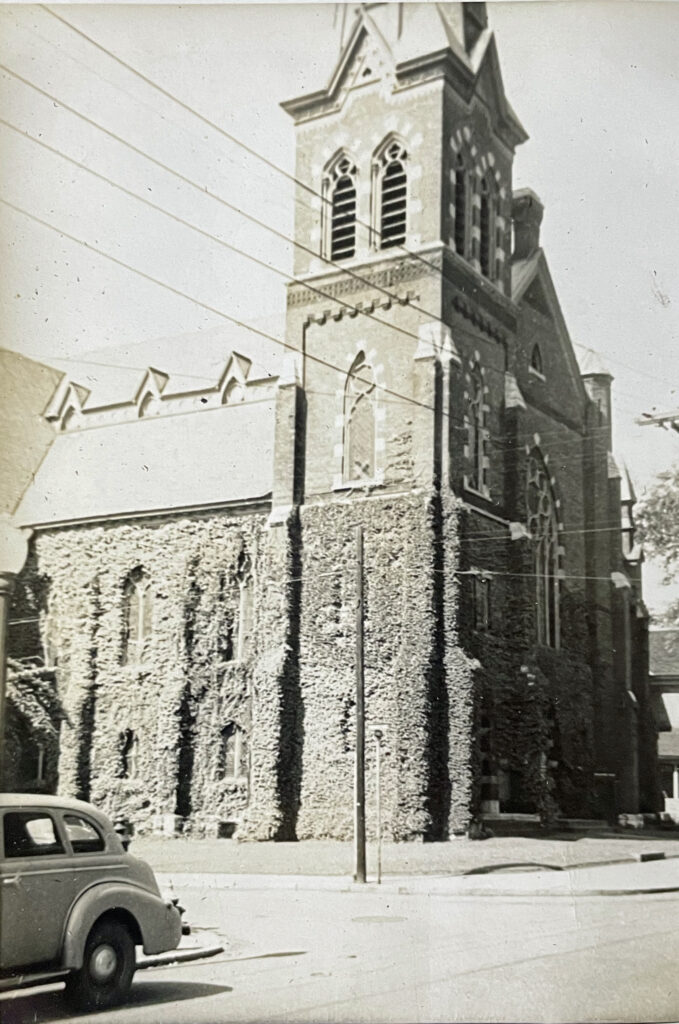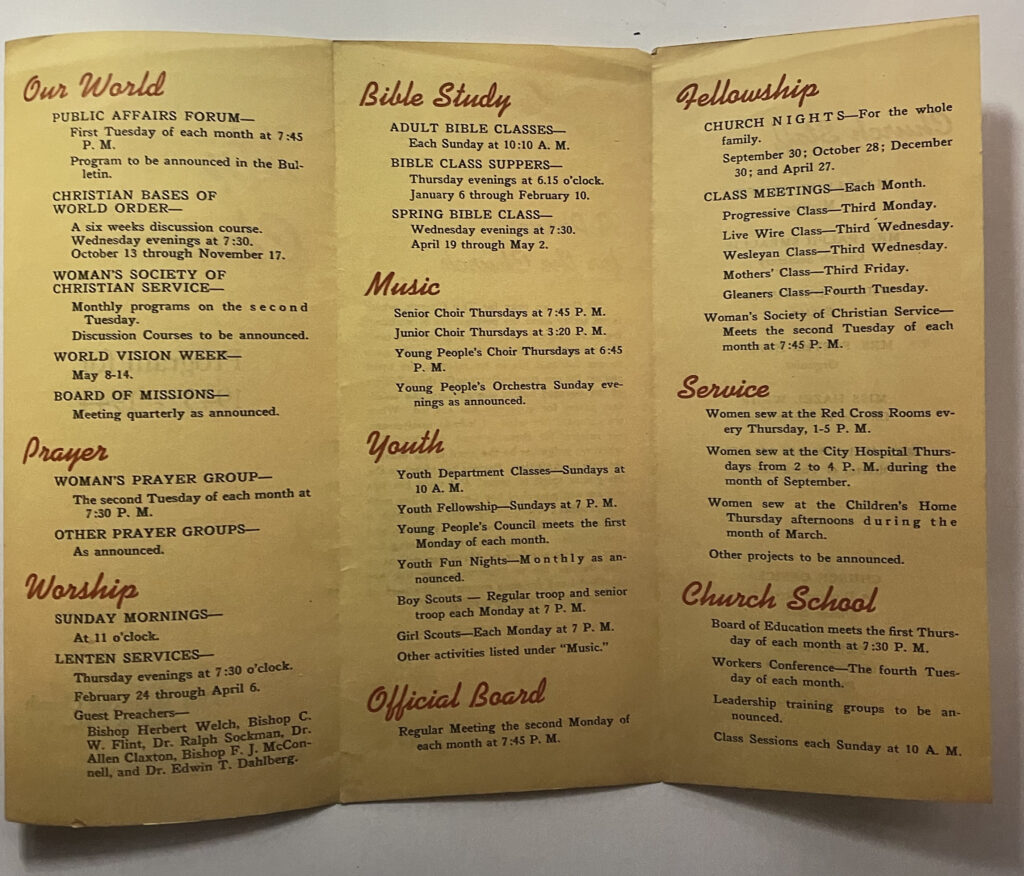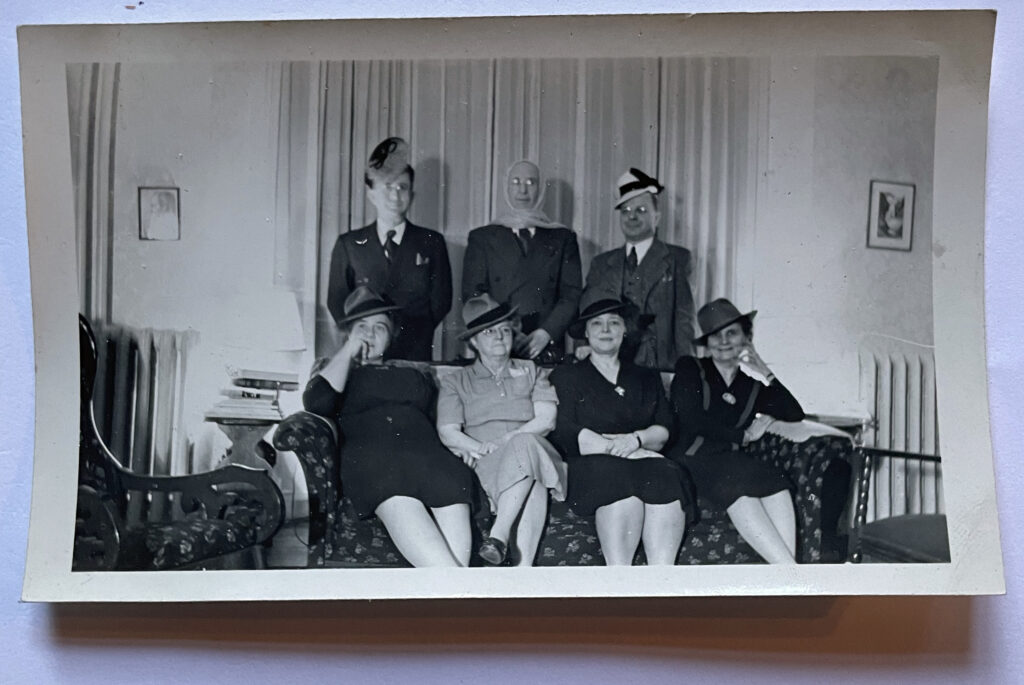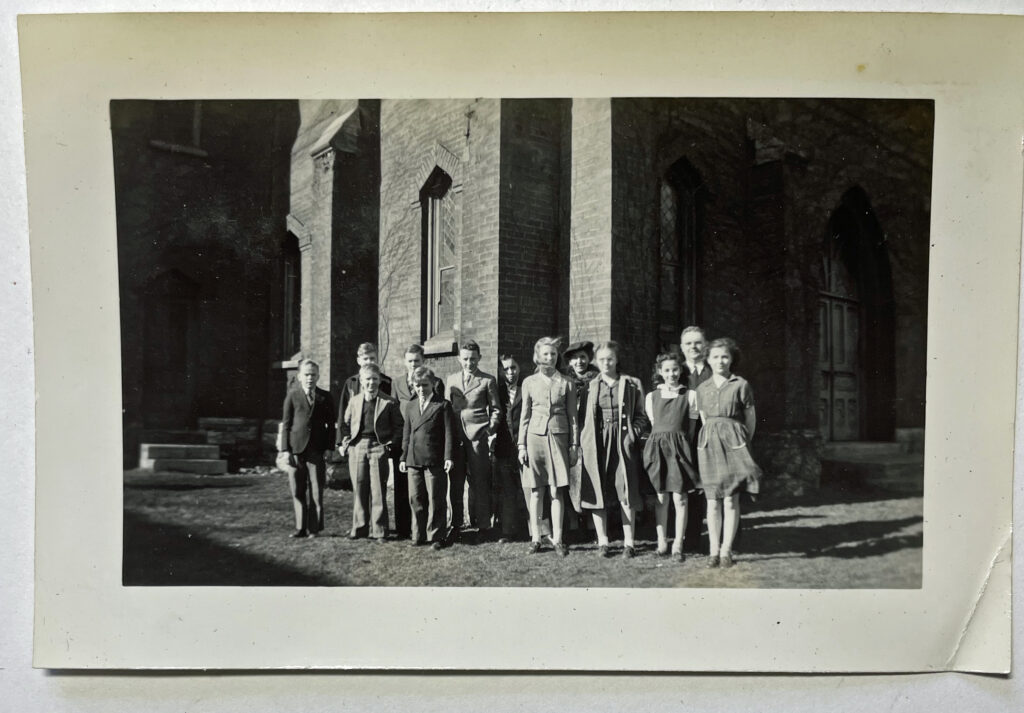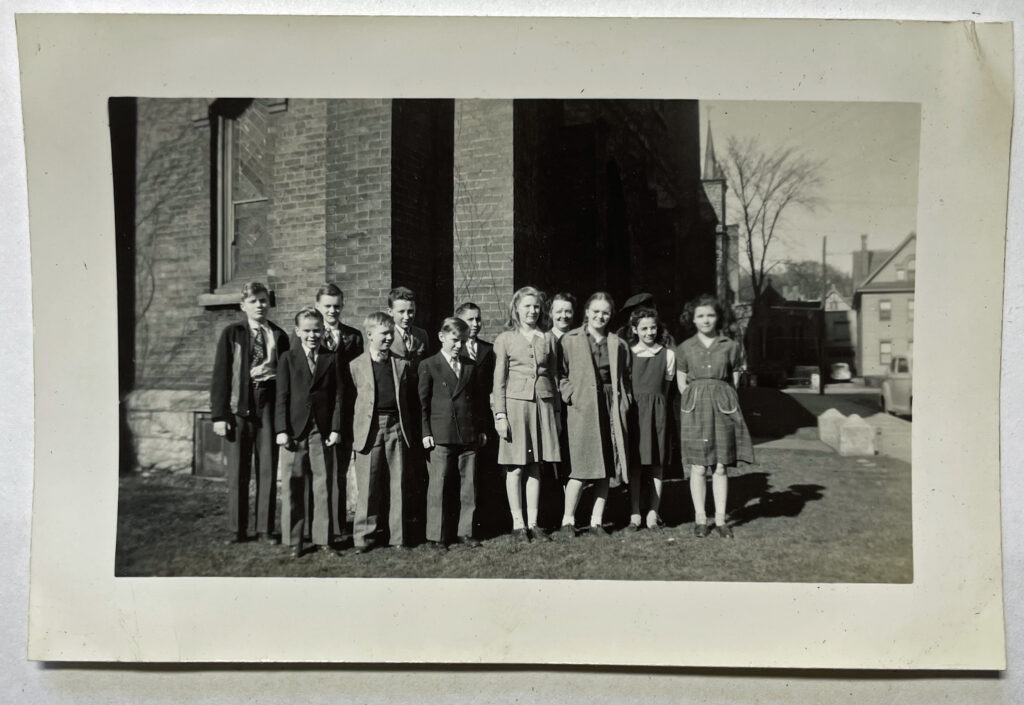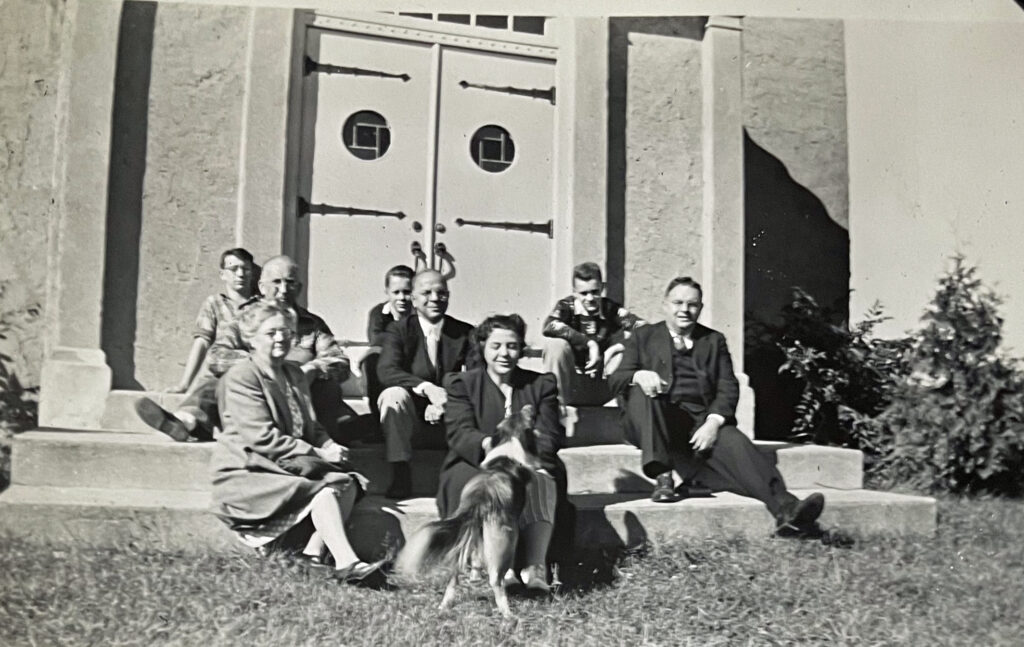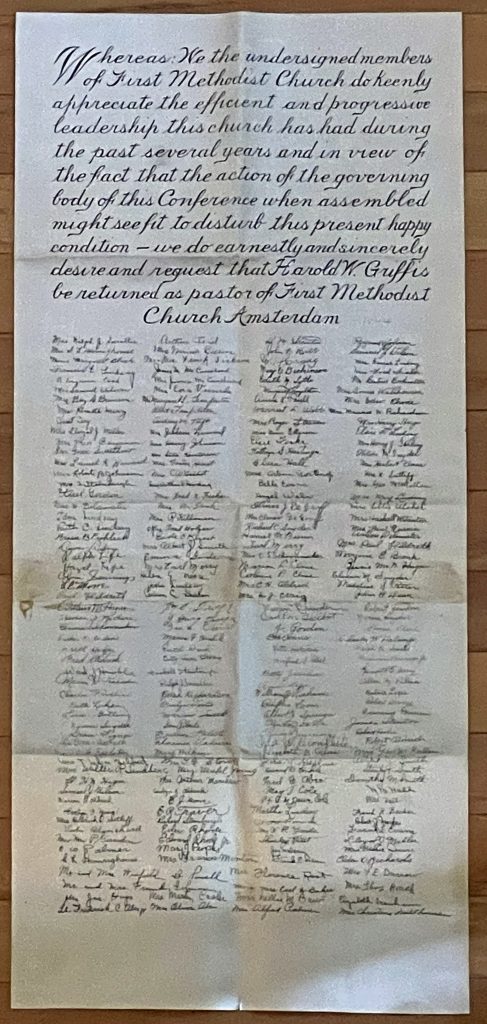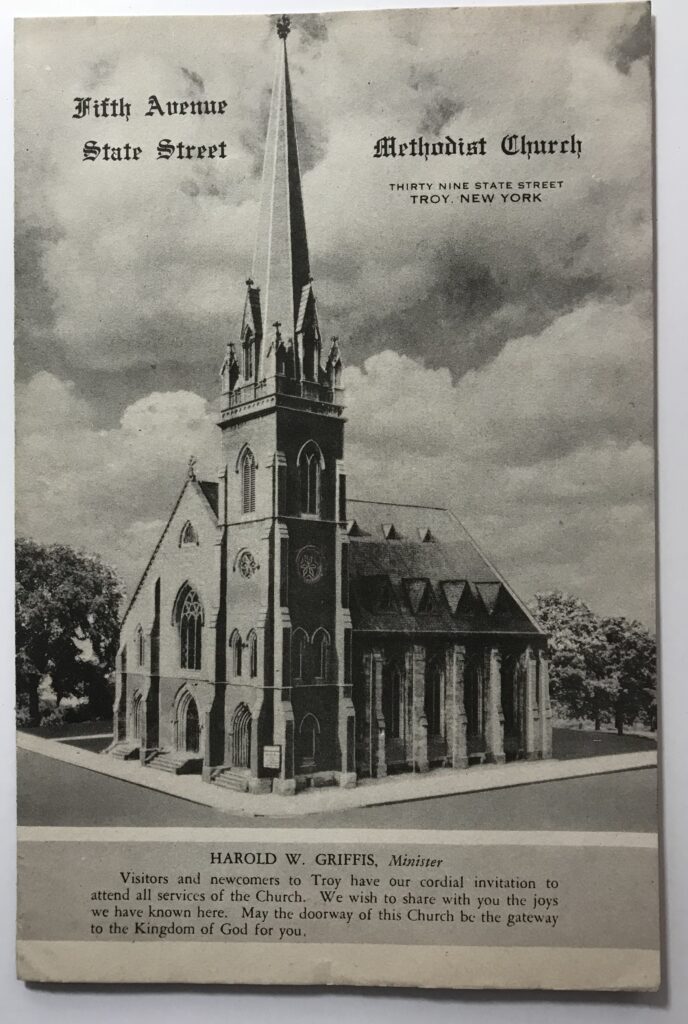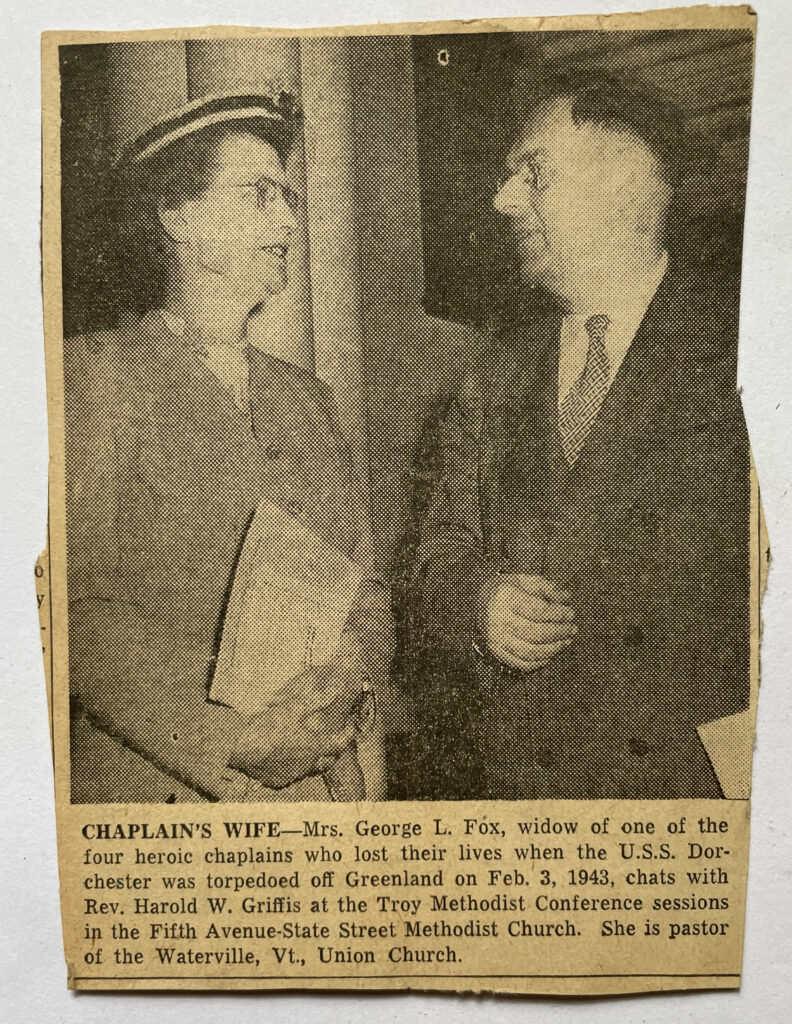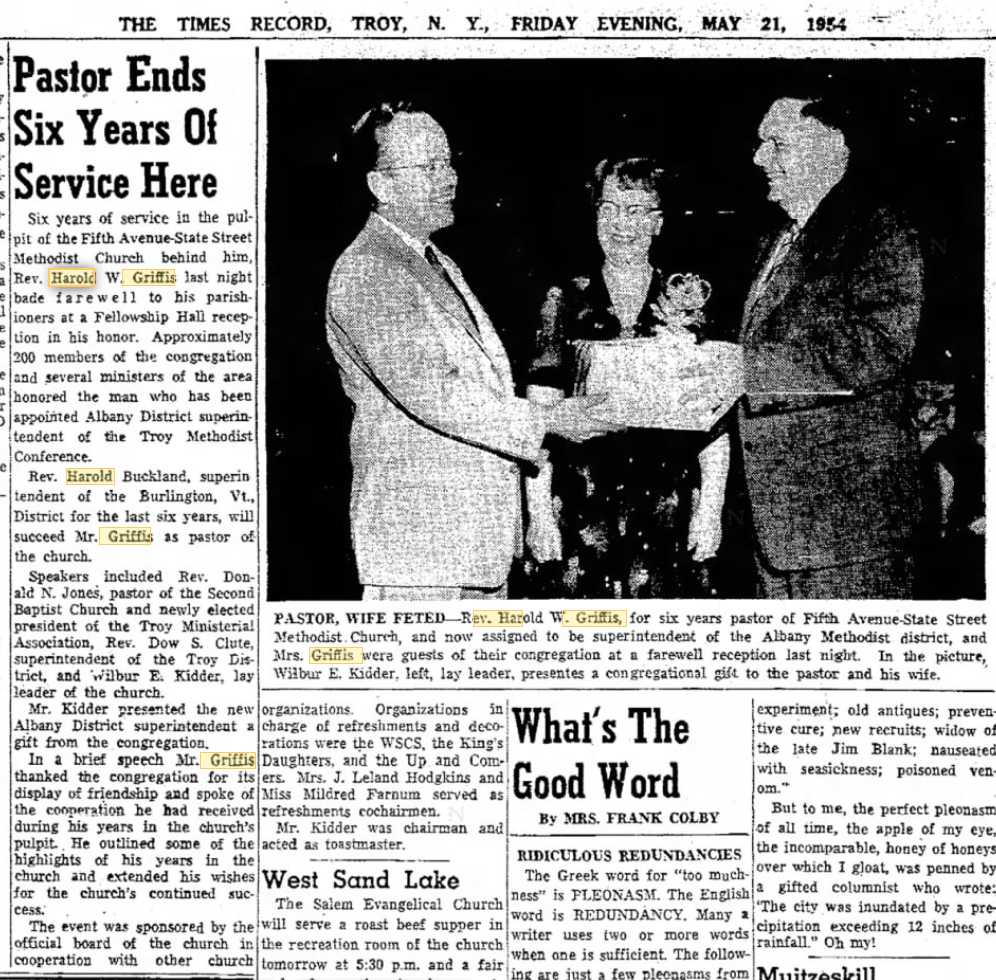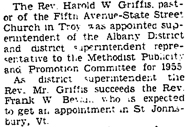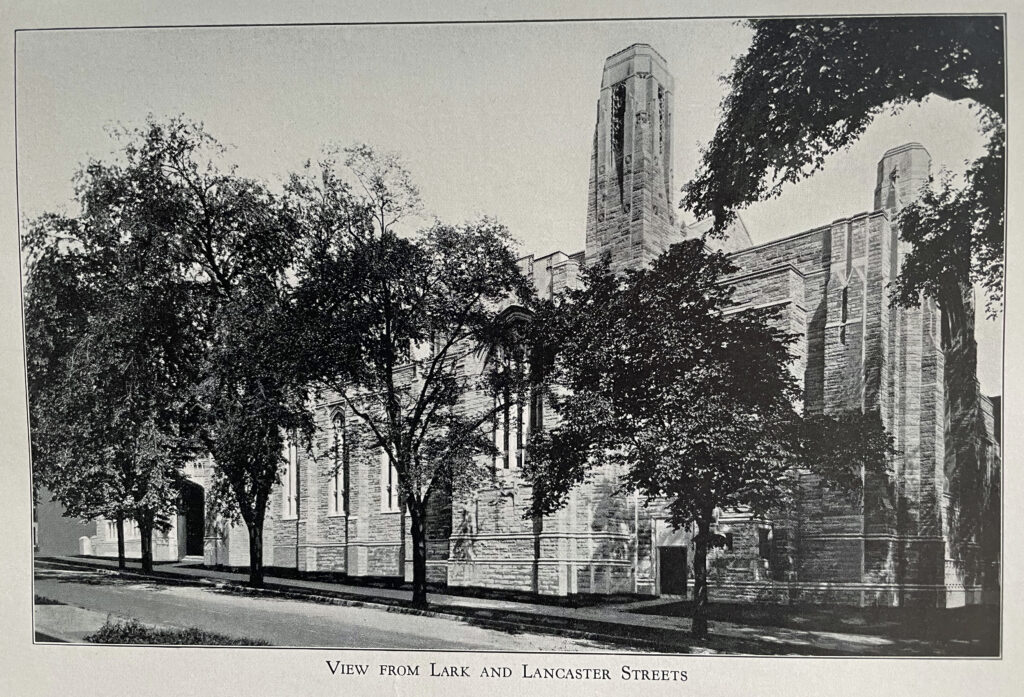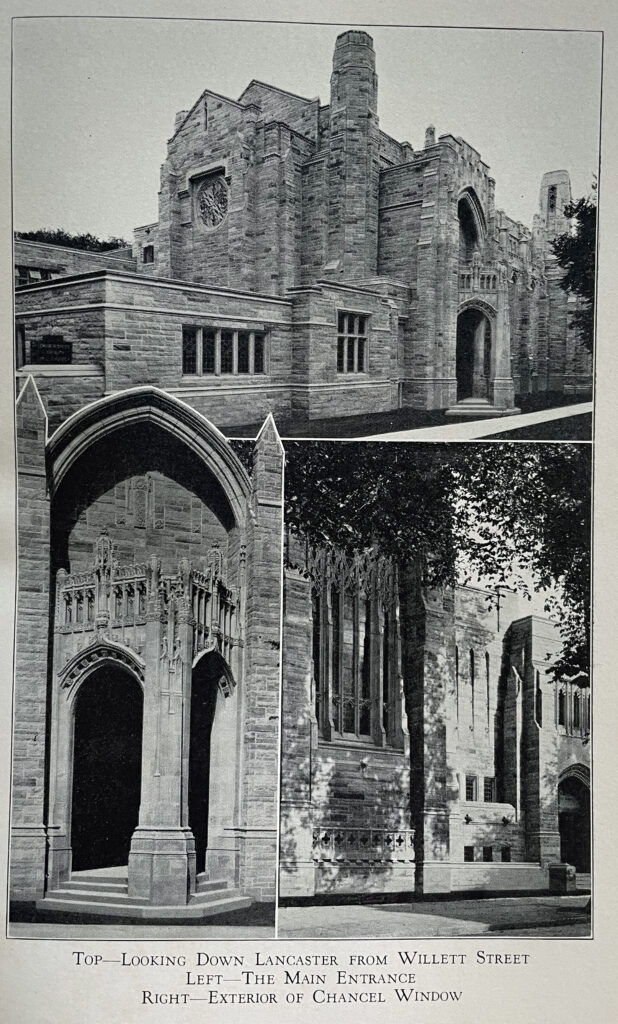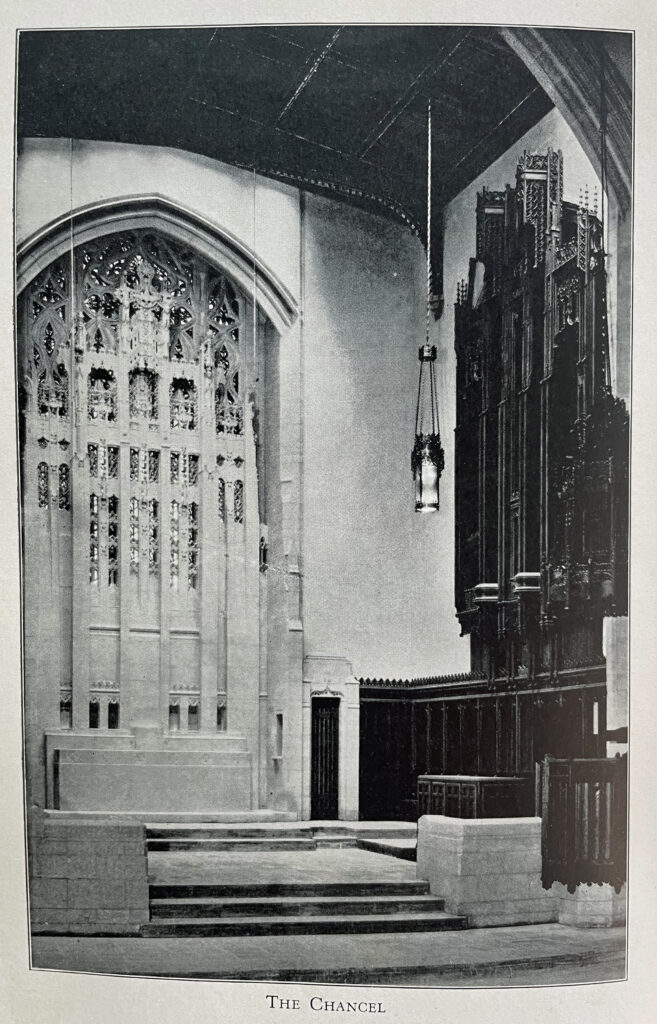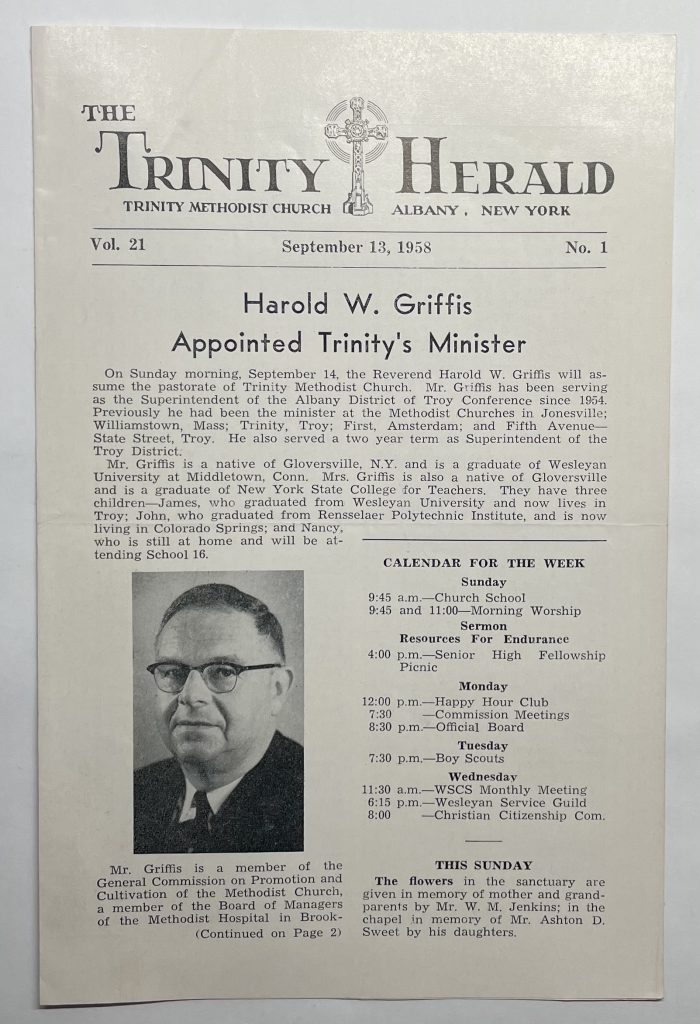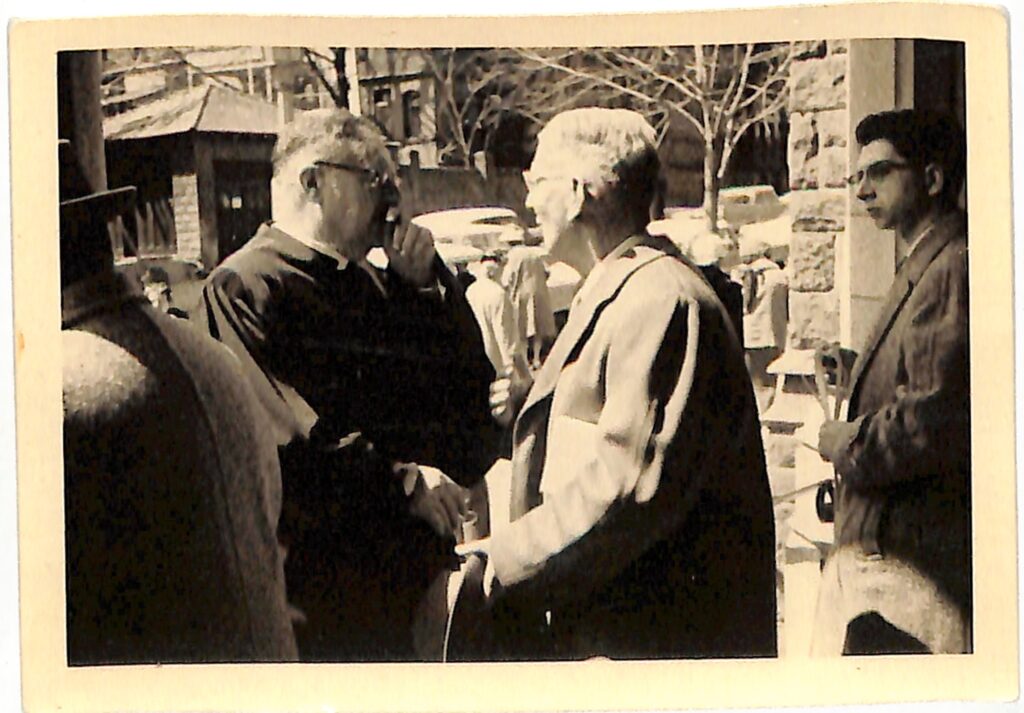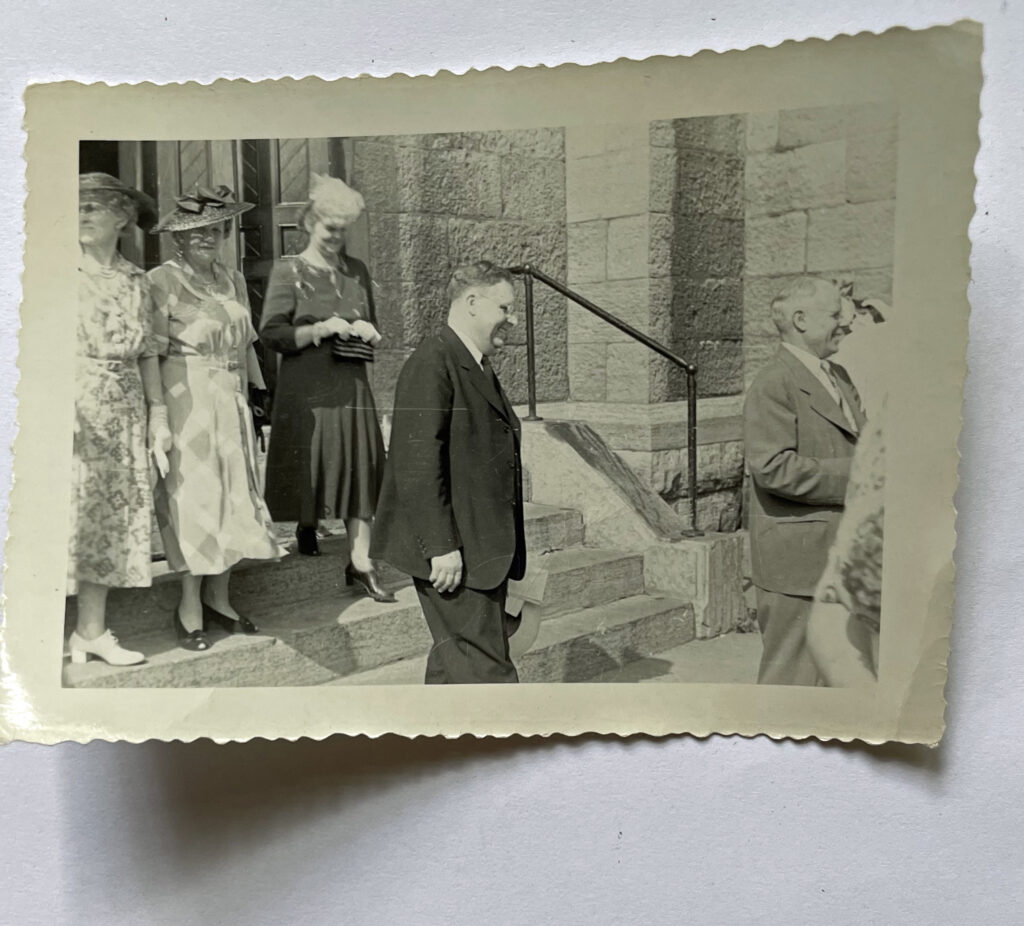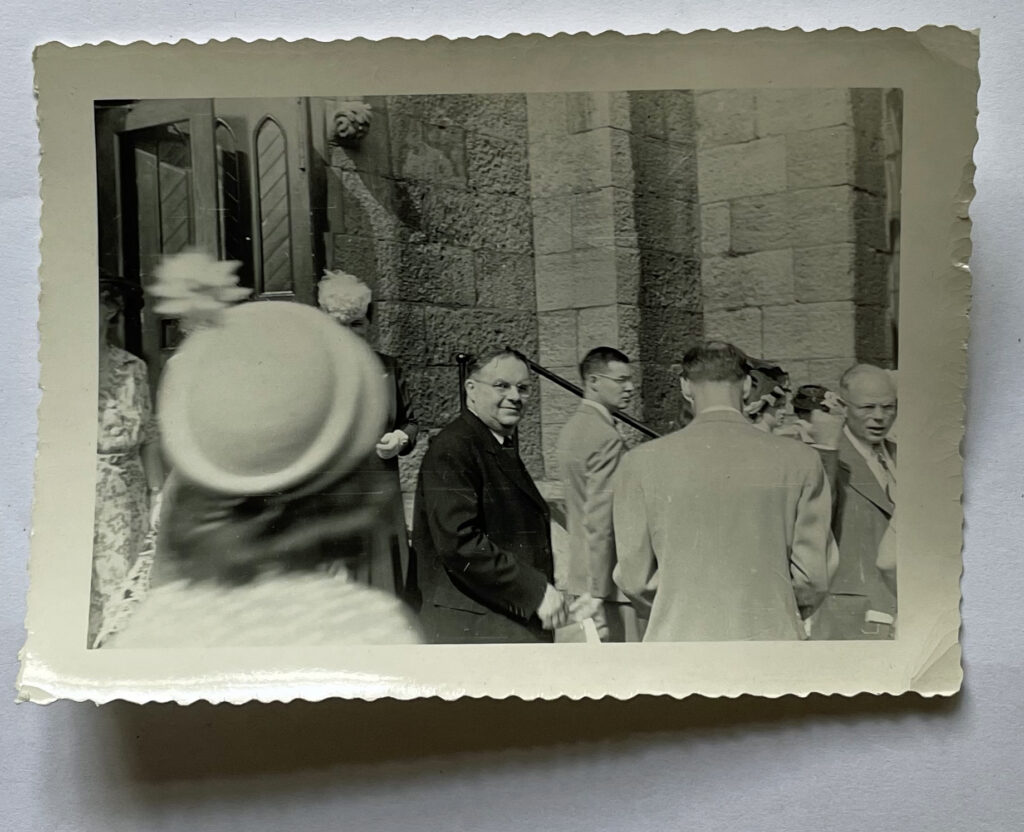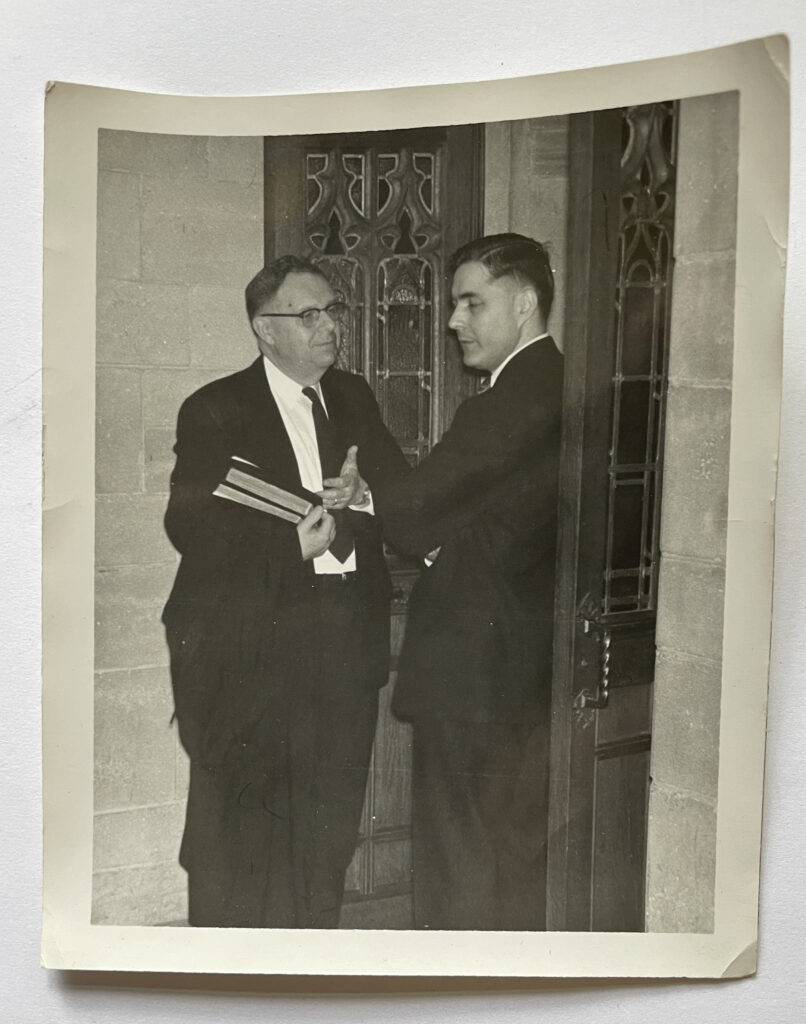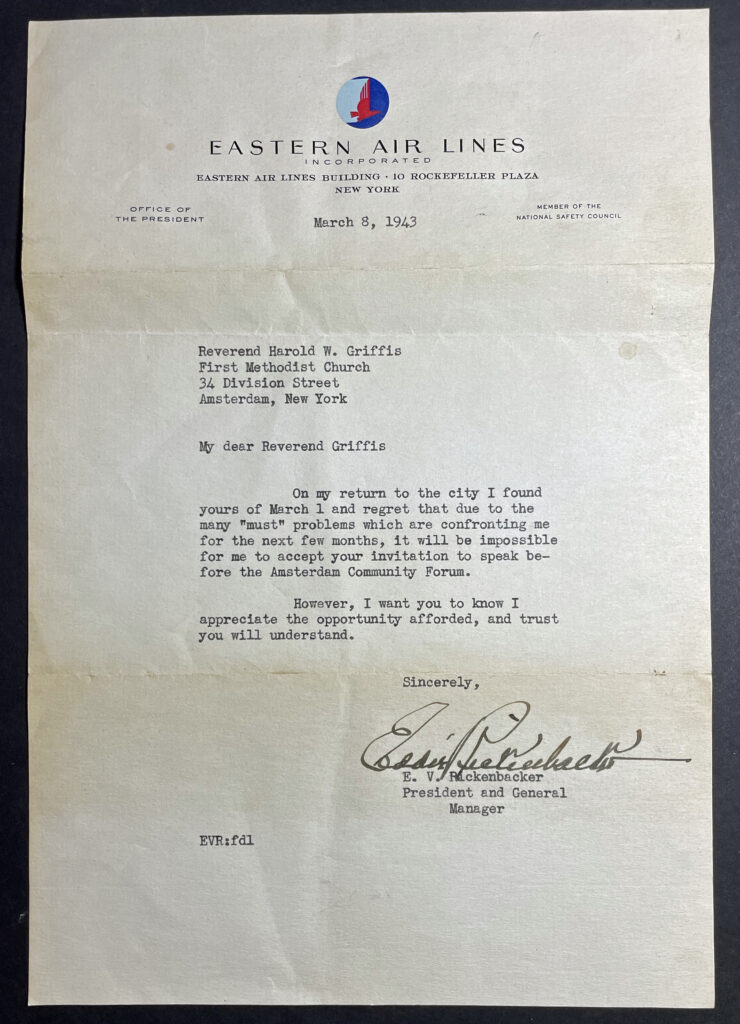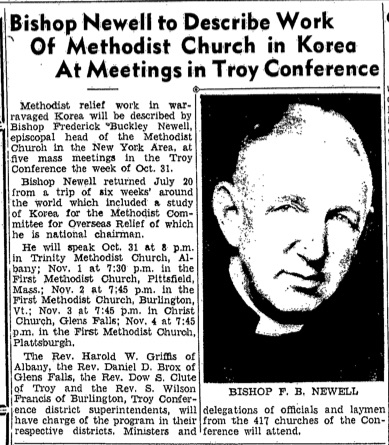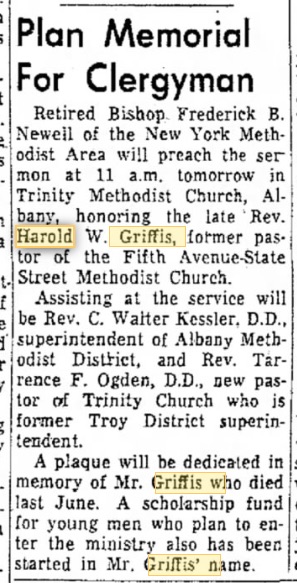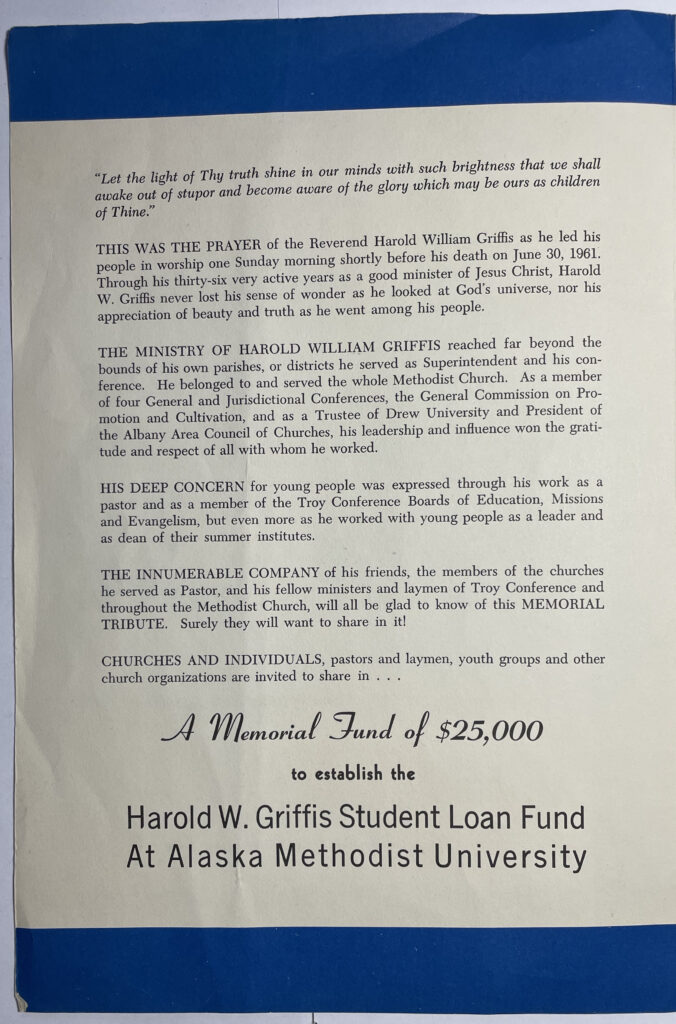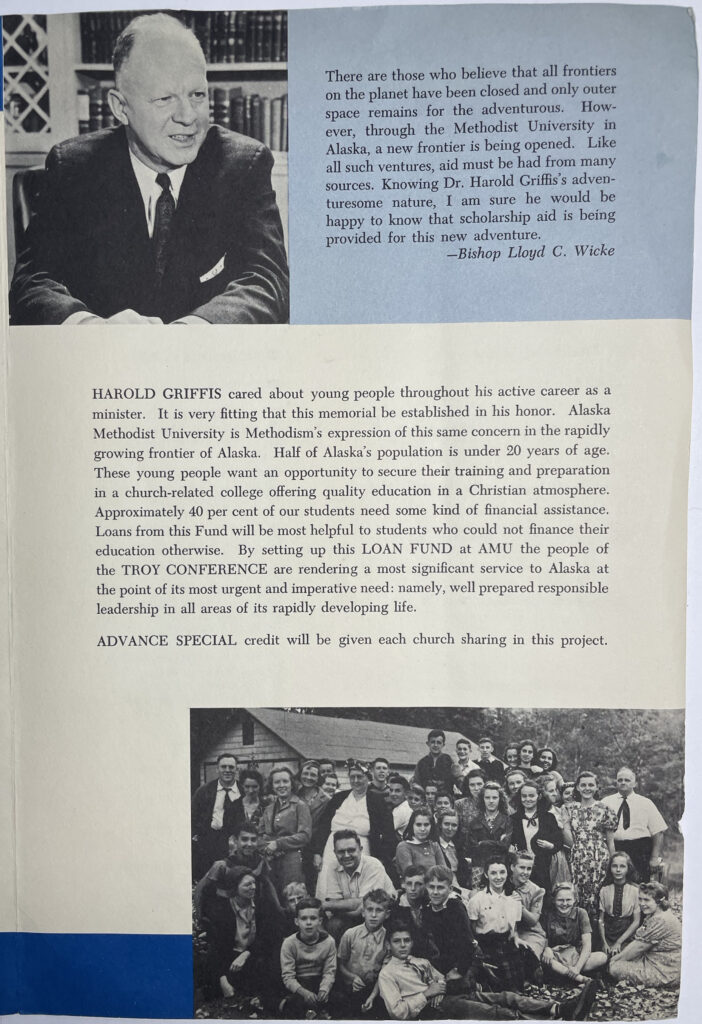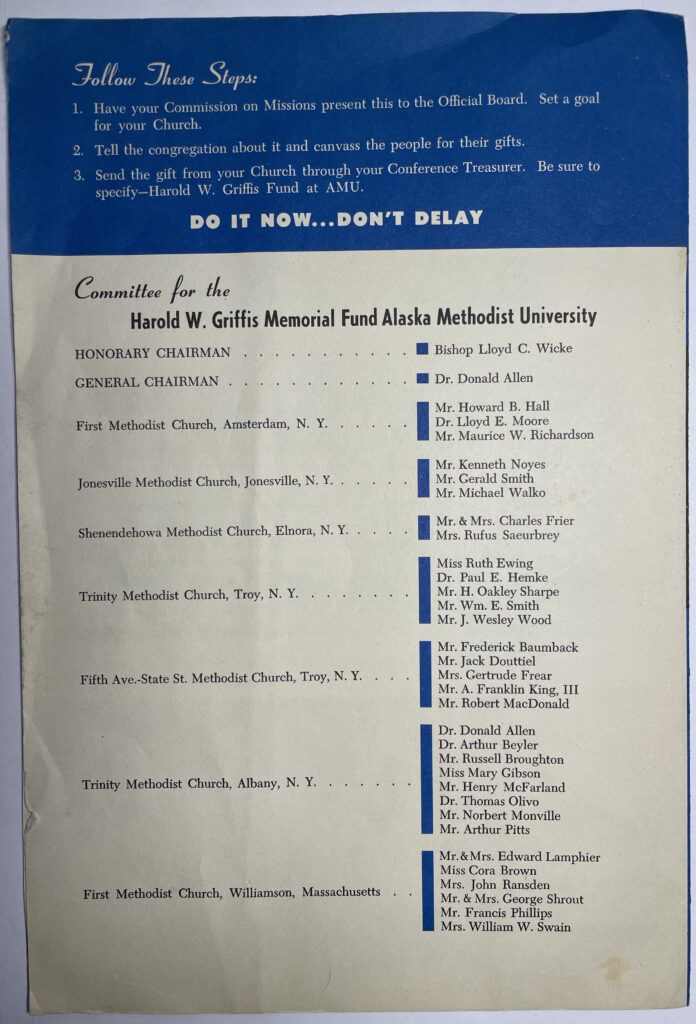David Griffis was the third child and son of Harold and Evelyn Griffis. David was born three days after Christmas in 1936 in Troy, New York. [1]
The featured photograph at the top of this story is a cropped version of a photograph that my father had on his bedroom bureau. He had it displayed ever since I could remember as a child. David’s smile is etched in my memory.
The story of David’s Short Life
This young boy, my uncle, would unfortunately succumb to suffocation from having chicken pox in his windpipe on October 9, 1938. The story of his untimely demise had been told by my father numerous times. Whether it is accurate is not certain but I imagine the general outline and major facts of the story are true.
After living in Troy, New York since 1930, the family of five moved from Troy to Amsterdam, New York in 1938. As a Methodist minister, Harold’s career and assignments within the church were dictated by the Bishop of his particular district and the sentiments of parishioners of a church. In 1938, Harold was appointed to serve the First Methodist Church in Amsterdam, New York. The family move was at a time when the Greet Depression had been ongoing since October 1929.
After moving to Amsterdam young David contracted chick pox and as responsible and loving parents, Evelyn and Harold attended to his needs. When a child is sick at the age of almost 2 years old (David was about one year and nine months old), the ability to communicate and convey what hurts or what is wrong with one’s body is very difficult. Evelyn and Harold did not realize the chicken pox had quickly spread within his air passageway. It is not known if the chicken pox had manifested itself externally. David began to rapidly have difficulty in breathing.
Harold and Evelyn swooped young David up, placed him in the car, drove to the general public hospital in Amsterdam. At the emergency room, David was denied service due to Harold not having health insurance. The parents then ran back to the car with David and raced to St. May’s, a Catholic hospital in Amsterdam. St. Mary’s hospital received David to attend to his needs. Unfortunately, time ran out. David passed away due to suffocation.
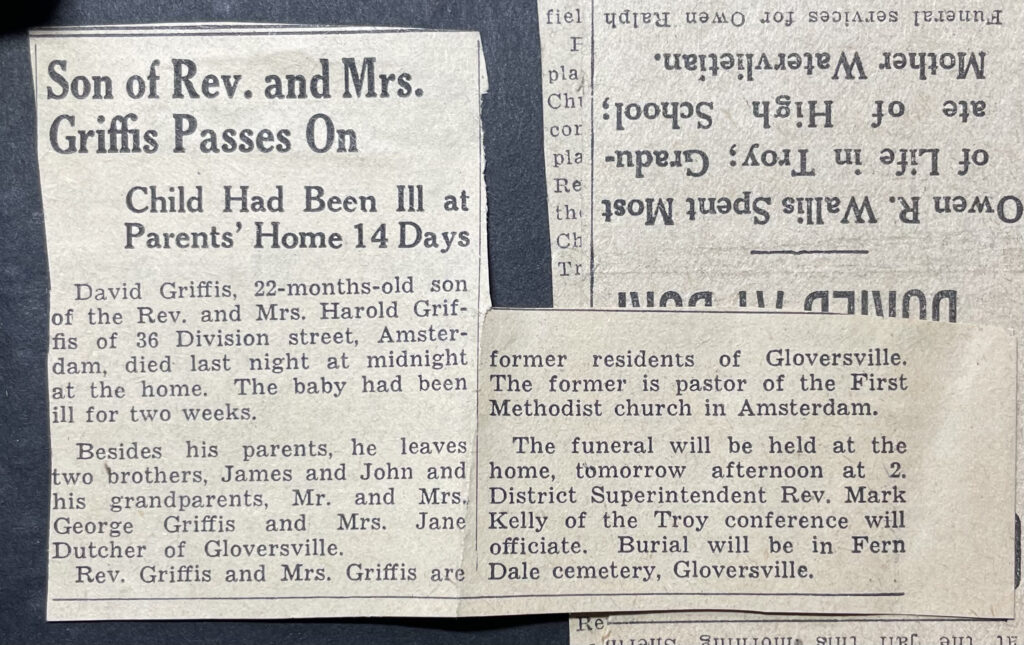
Healthcare in the 1930’s
The unfortunate experience that Harold and Evelyn experienced with the death of their son David should be put into a wider historical context. Only 9 percent of the population had insurance on the eve of World War II. That percentage had more than doubled to nearly 23 percent by the end of the war. It more than doubled again by 1950 and was close to 70 percent by 1960. [2].
While private health insurance as we know it today was rare during this period, “Sickness funds” had existed at least from the time of the Civil War. These funds were established by employers, unions, and fraternal organizations. By the progressive period (1896–1916) it was estimated that 20 percent of industrial workers were members of a sickness fund. Even though the sickness funds did not provide health insurance per se, satisfaction with these plans is perhaps an under-appreciated reason why early compulsory health insurance initiatives were not successful. [3].
During the 1920s, individual hospitals began offering services to individuals on a pre-paid basis. However, by the 1930s the fee-for-service system of paying for medical services was not working. What stood in the way of dramatic improvements in public health was the Great Depression. Local hospitals were affected by the Depression like other firms. Receipts drastically dropped as well as occupancy rates while charity care rose substantially. [4]
By the mid-1930s, the average national income in the United States was half that of 1929. With nearly 40 percent of some states’ populations on government relief, fewer patients could afford to pay for medical care. Physicians earned less as a result, but many continued to treat charity cases for free. Hospitals had similar problems. [5]
In the absence of modern drug therapies, the average hospital stay in 1933 was two weeks. Many patients could not afford to pay, so beds remained empty while people suffered at home. In addition to less people seeking medical treatment, the Great Depression caused lack of hospital funding. Many hospitals were forced to make cuts to staff members, including nurses, and often times hospitals ended up shutting down. [6]
The Great Depression had taken hold and many Americans were unable to afford the care they desperately needed. Insurance policies for health care coverage were practically non-existent. As a result, many hospitals across the country were thrown into financial ruin and were forced to close. [7]
Health was regarded as uninsurable because hazards had to be both definite and measurable. When the hospital service plans finally became popular, they initially did not offer health insurance; they offered hospitalization coverage. An admission to a hospital was a definite event, determined by a physician. In 1934 commercial carriers such as Blue Cross, began offering hospital coverage in a few states. Initially, they did not provide physician coverage. Most states viewed the new hospital service plans as the prepayment of hospital services, rather than as insurance. In 1933, however, the New York state insurance commissioner determined that the plans should be viewed as insurance. By 1939, 25 states had such enabling legislation. [8]
The development of Blue Shield plans mirrors that of Blue Cross. The first medical service plan, analogous to the hospital services plans, was the California Physicians’ Service, established in 1939. The plans had two key features. First, they required free choice of physician, and second, they were indemnity rather than service benefit plans. This meant that the plans paid the patient a dollar amount for each covered event; the patient, in turn, was responsible for paying the physician.
The emerging trends associated with medical care and insurance did not help young David’s plight. As a Methodist minister, Harold did not have insurance to pay for such services and in a moment where he needed time-sensitive emergency service, it was denied.
Memories of David
David’s death had a profound effect on Harold and Evelyn. My father, while only six years old at the time, profoundly remembered in his late 80’s the wake that was held in their home before his service and burial. Nancy Griffis, their fourth child, recalls Evelyn revealing that she felt responsible for David’s death for many years. She also recalled that Harold “was in deep depression” after David’s death but was able to function and perform his duties as a pastor. Evelyn also indicated to Nancy that it too a great effort to help Harold overcome his sense of lose and responsibility for David’s death.
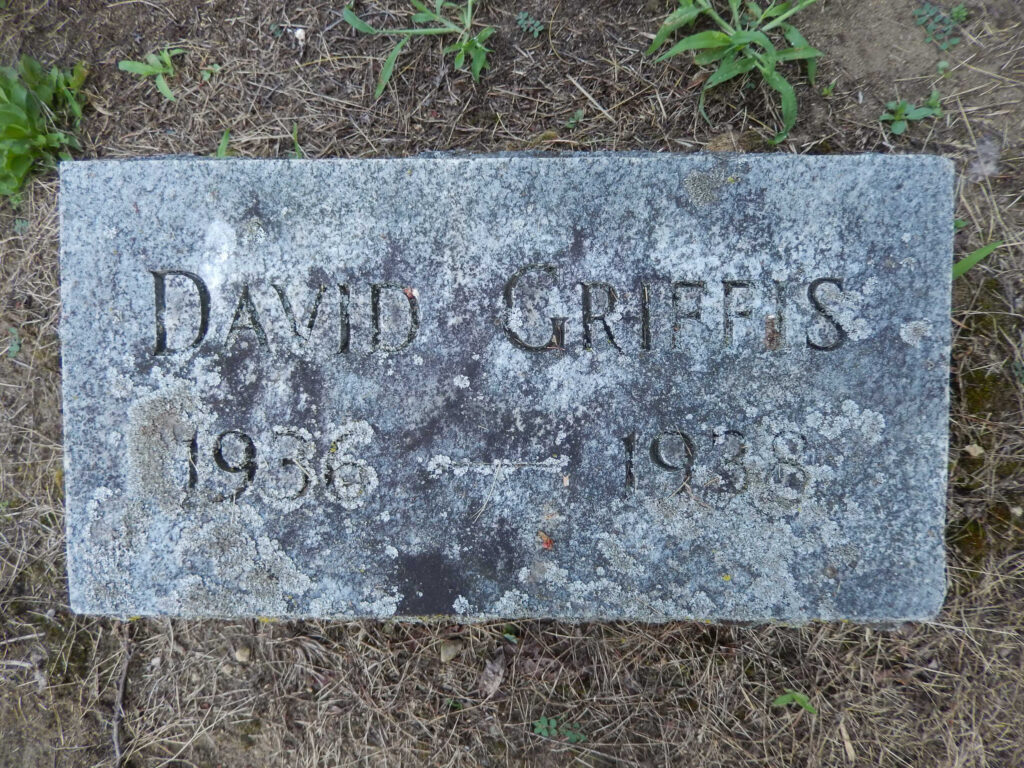
Harold Griffis always promoted an ecumenical dialogue in his sermons and talks; and shared his pulpit with ministers of other denominations. He established close associations with Catholic priests, protestant ministers, and Rabbis in each community that he was assigned. Subsequent to David’s death, whenever there was an appropriate time to discuss this family experience of David’s passing, Harold spoke kindly of the openness of the Catholic faith and their service to man. The actions of the individuals at St. Mary’s hospital in Amsterdam, New York reflected the ideals of his faith and had an indelible effect on his views of the hospital.
As Harold stated in a speech to the Kiwanas Club, “the most important thing in the world is not our statement of high ideals but what you deliver on the basis of those ideals”. [9] While Harold had a deep love for man and God, he also believed that personal responsibility and actions toward others determine how we and our situations will be judged.
While David’s life was short, he undoubtably brought smiles, laughter and bright light into lives of his family.
The photograph below was taken probably taken when David was two months old, brother John on the left and brother James on the right.
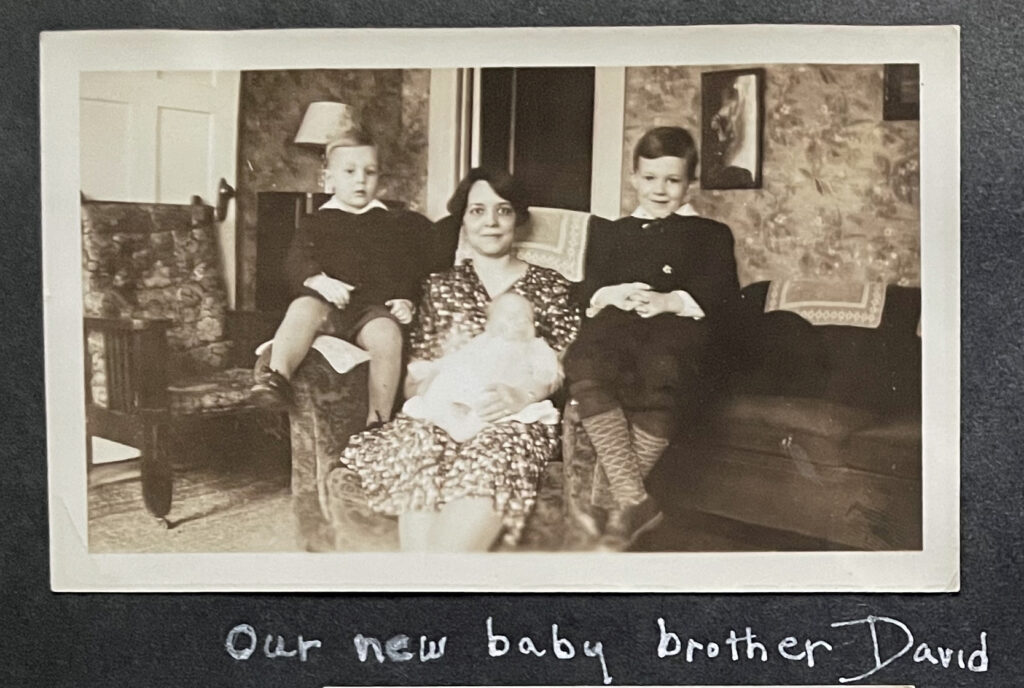

The following is a. group shot of the family in 1937. Harold and George Griffis are in the back standing up. From left to right, grandmother Jane Dutcher, aunt Kate Sperber, Ida’s sister, and grandmother Ida Griffis are sitting. James, John and David are on the blanket.
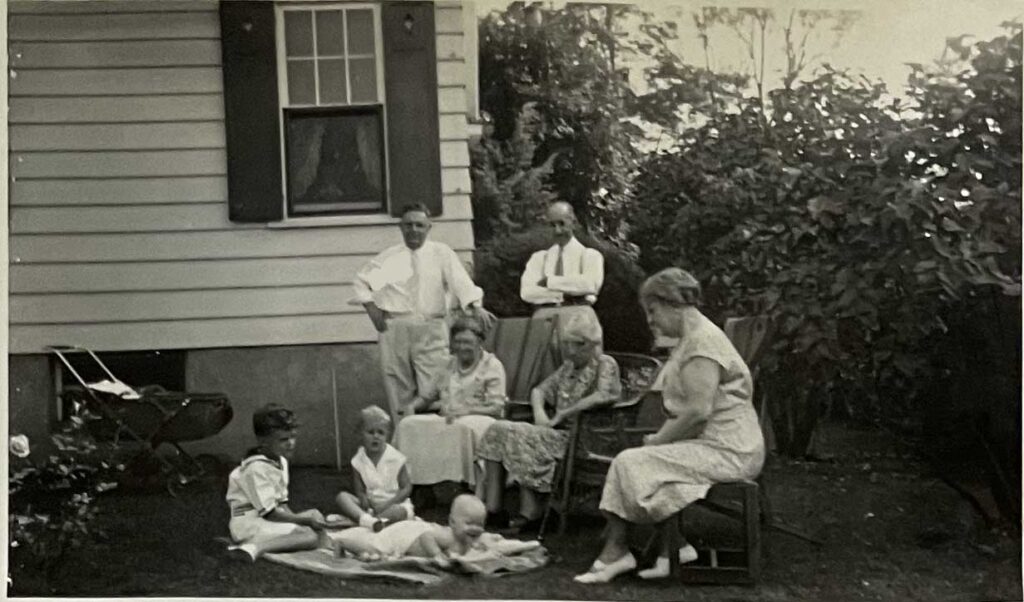
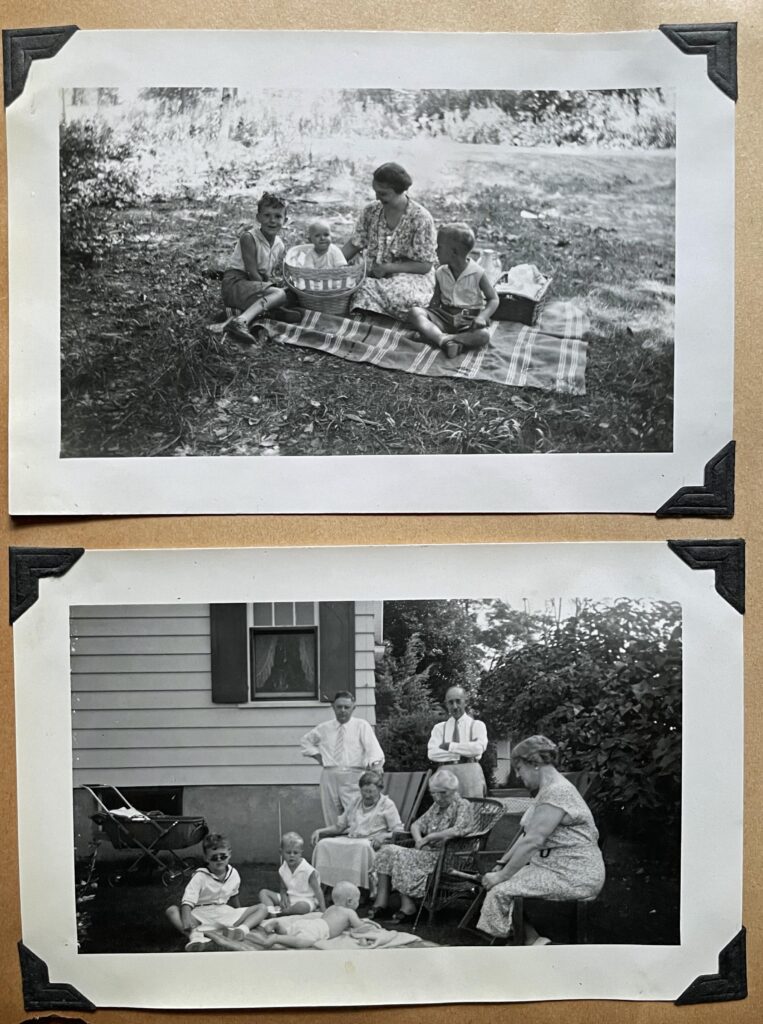
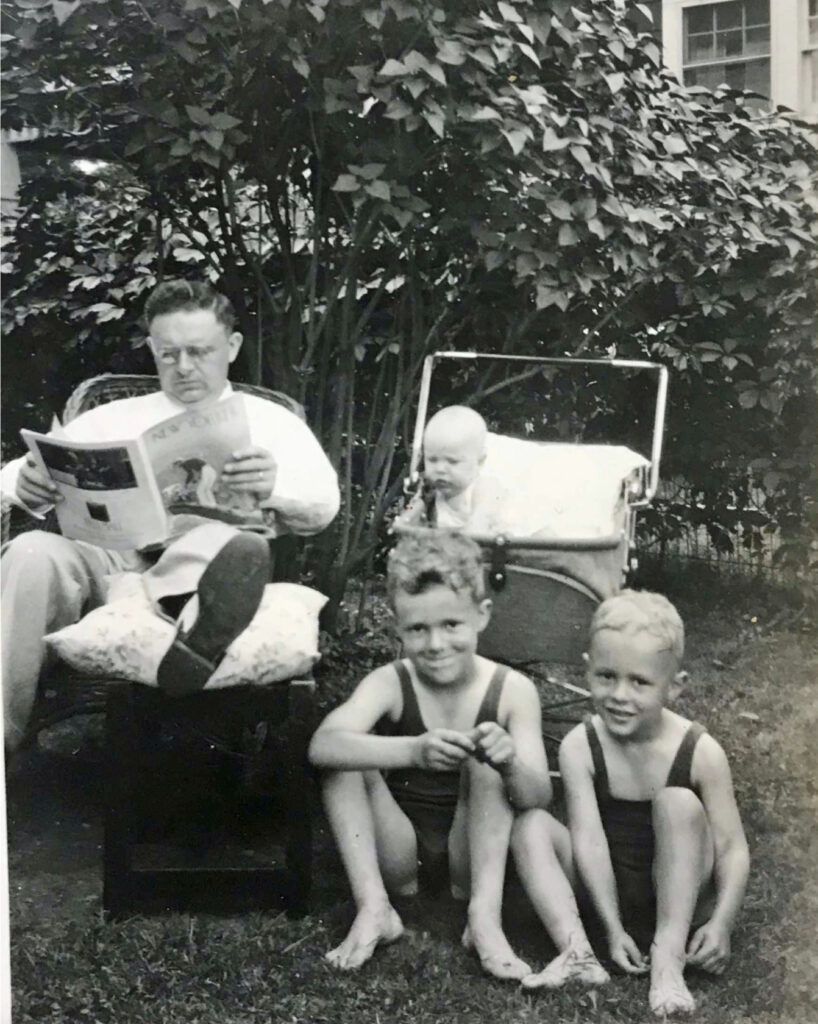

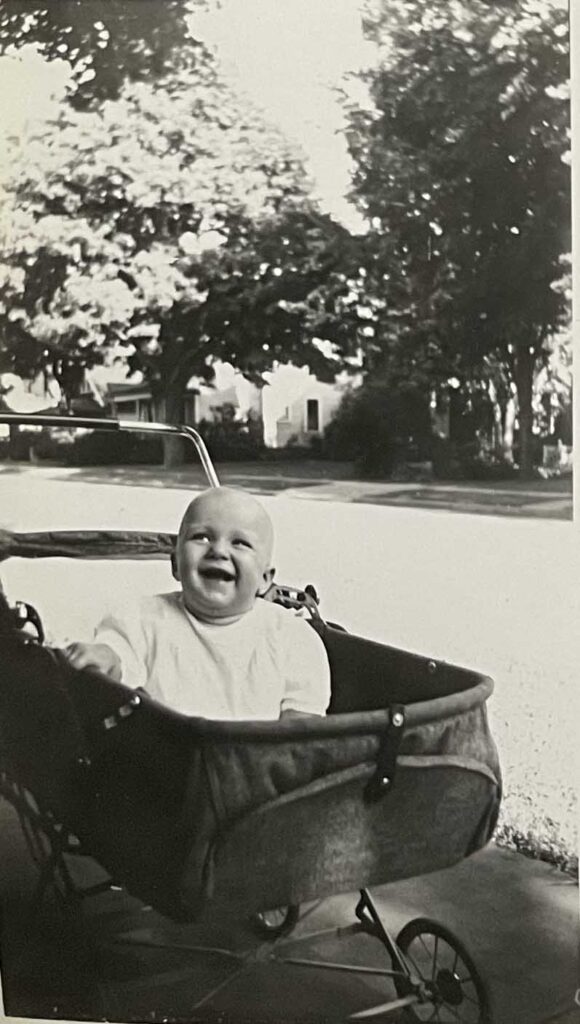

This photograph was taken in August, 1938.
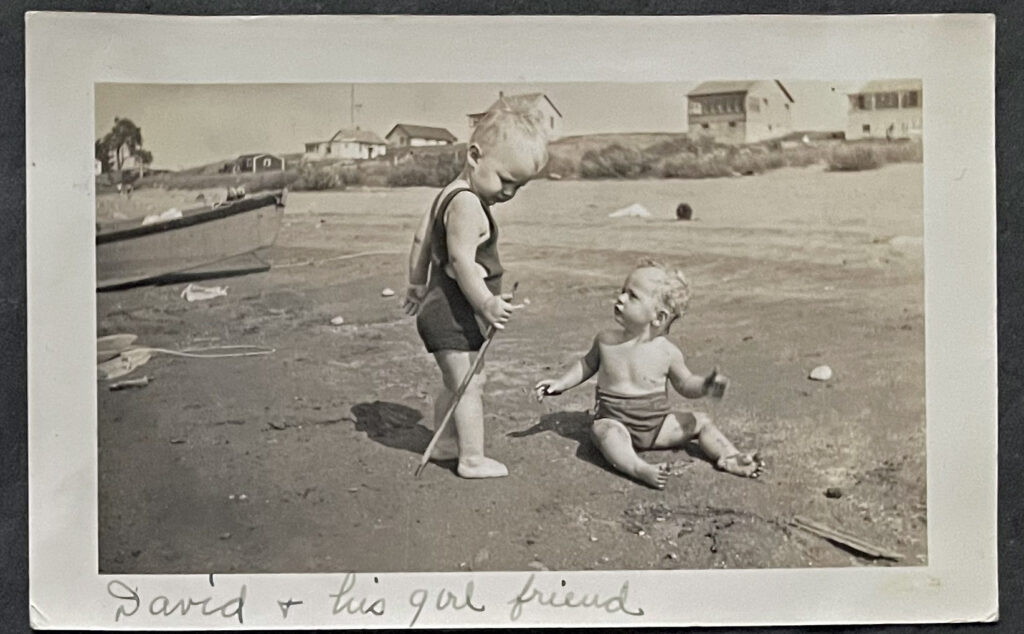

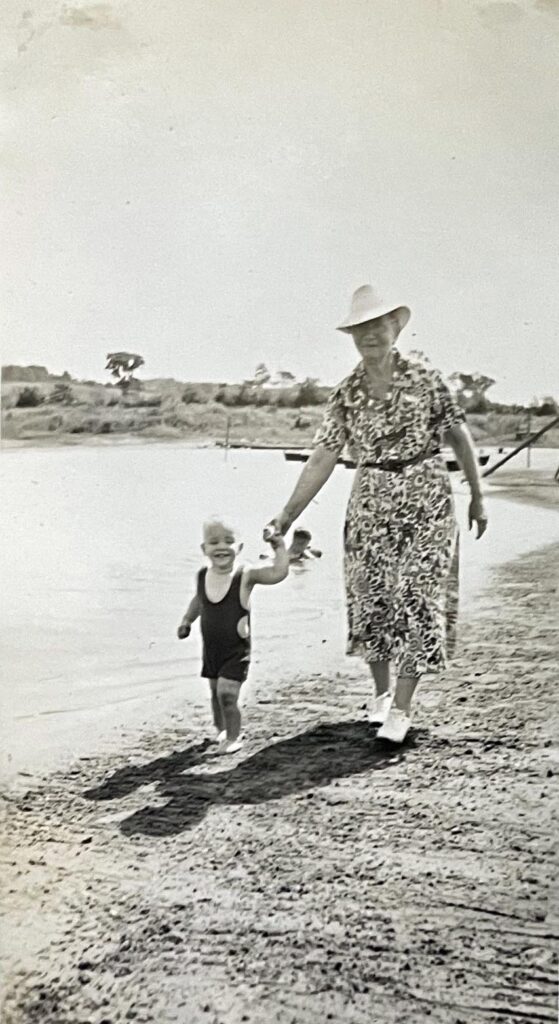
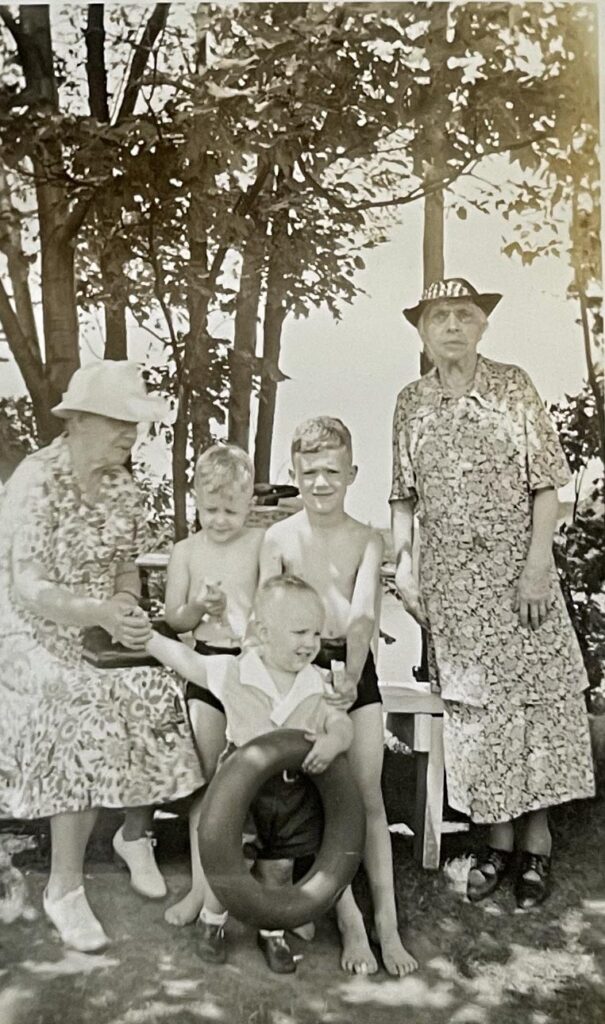
David at one and a half years old on the steps of the school.
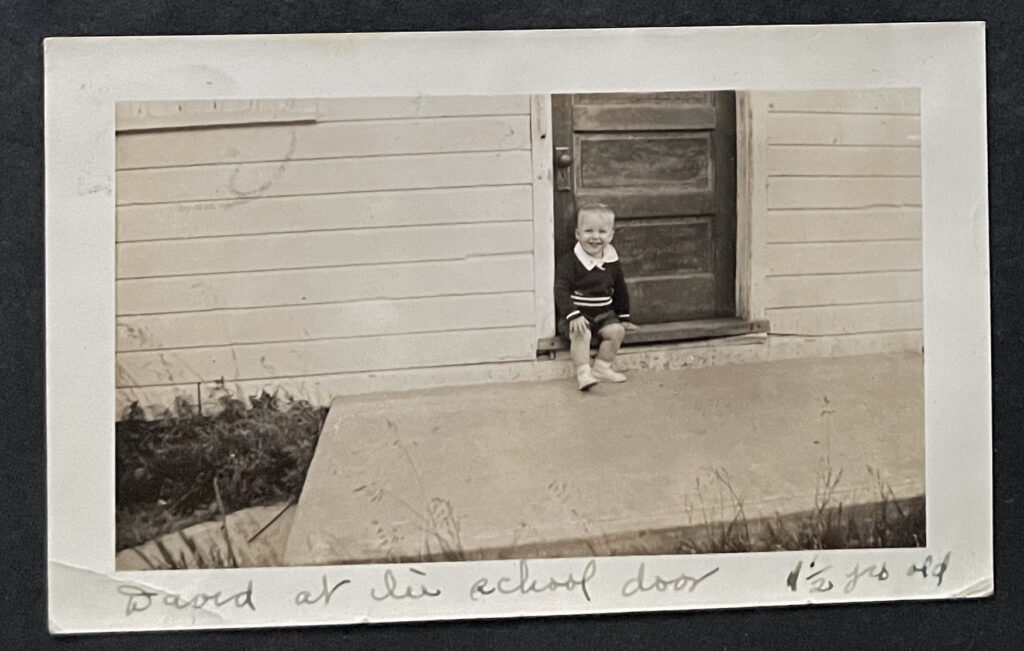
The three brothers in Amsterdam, New York, 1938.

The following family group photograph was taken near the First Methodist Church in Amsterdam in May 30, 1938. Front row: unidentified playmate, James D. Griffis, David Griffis, John H Griffis; Second row: Edison Platts (maternal side uncle of Evelyn Griffis), Harry Staley (husband of Edith Mae Griffis daughter of George Griffis), Harold Griffis, George Griffis (Harold’s step father); Back row: Charlotte (Lottie) Platts (Evelyn’s maternal aunt), Evelyn Griffis, Aunt Kate (Catherine Platts, another of Evelyn’s maternal aunts), Jane Dutcher (Evelyn’s mother), Ida Griffis (Harold’s mother).
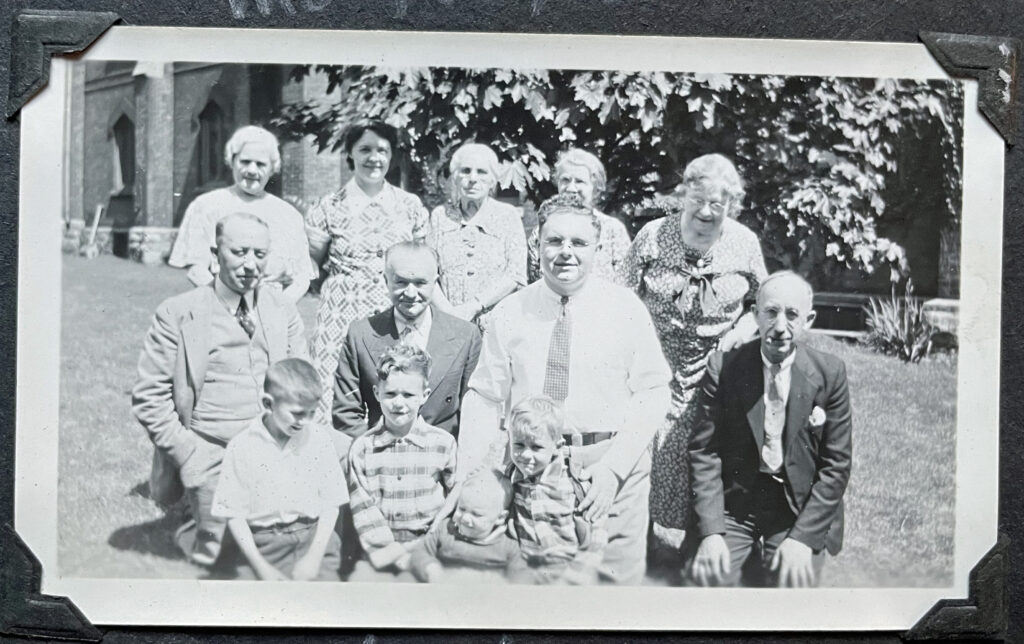
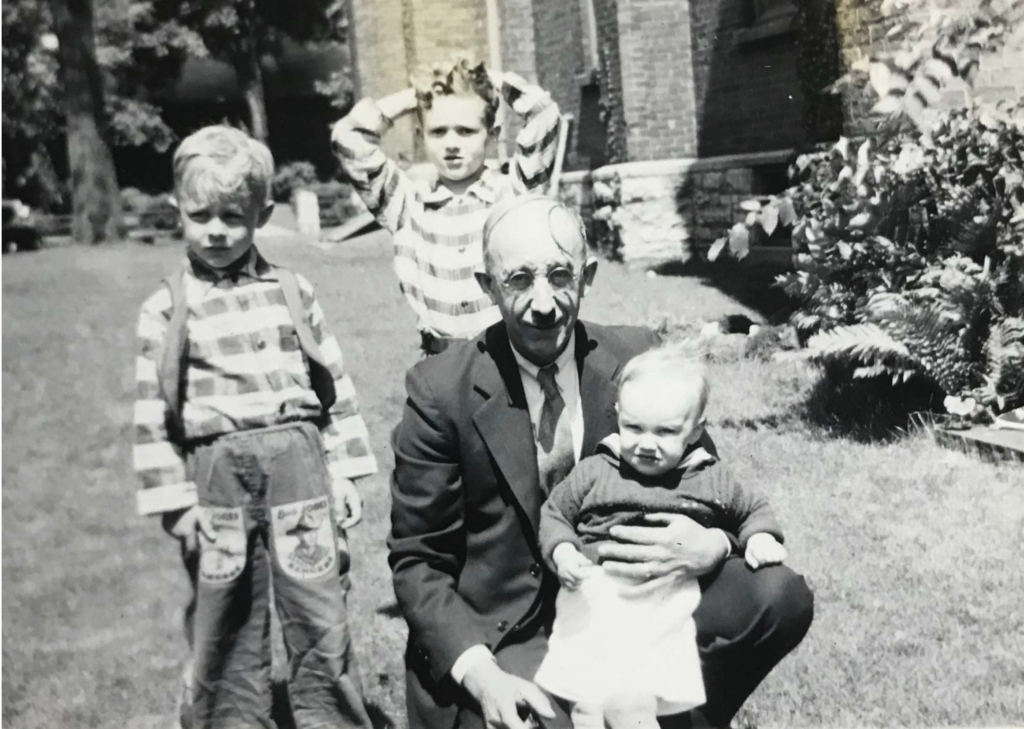
Another photograph of the family on the same day: Back row: Charlotte Platts, Edison Platts, Harold Griffis, Harry Staley, Kate (Catherine Platts), Evelyn Dutcher Griffis, Jane Dutcher (Evelyn’s mother), Ida Griffis (Harold’s mother); front Row: James Griffis, George Griffis holding David Griffis, John Griffis
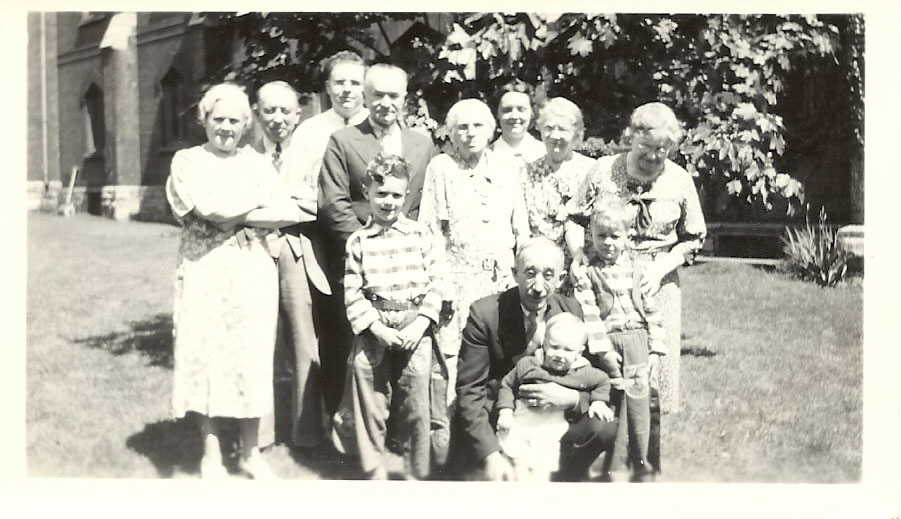
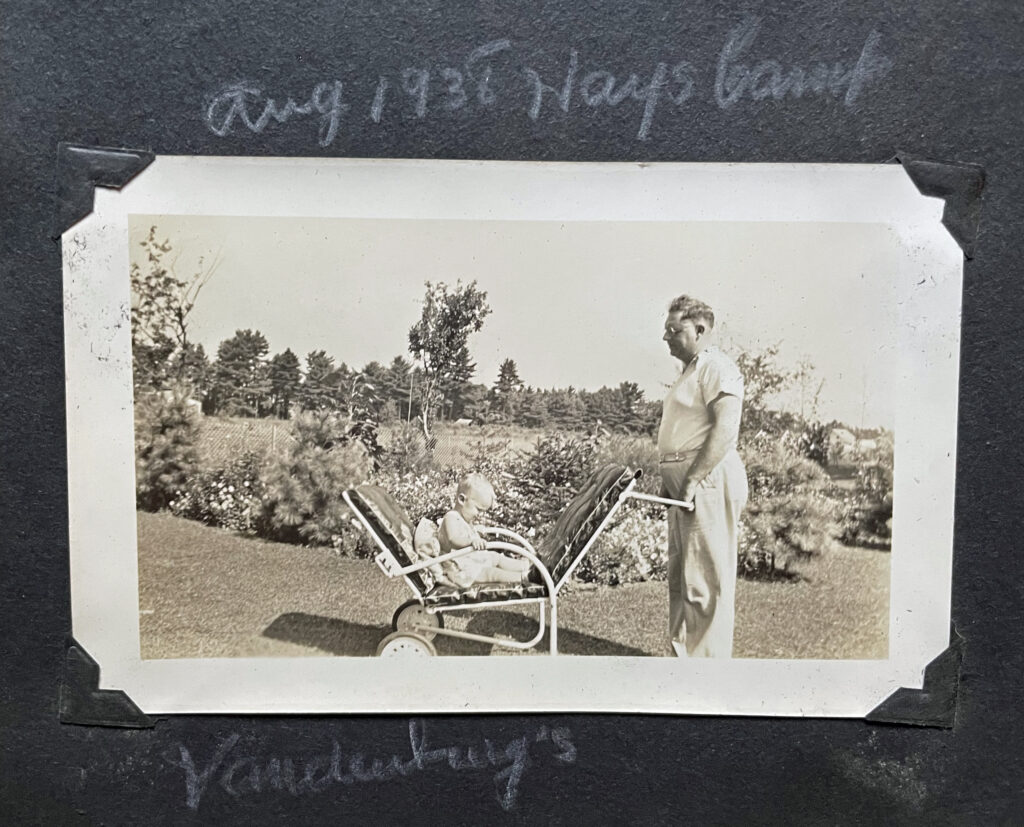
Sources
[1] New York State Birth Index, 1881- 1942, 1936, Page 503, birth date 28 Dec 1936, Birth certificate Number 81612
[2] Morrisey, Michael, Health Insurance, Chapter One: History of Health Insurance in the United States, Chicago: Health Administration press, 2014 https://account.ache.org/iweb/upload/Morrisey2253_Chapter_1-3b5f4e08.pdf
[3] Murray, John, Origins of American Health Insurance: A History of Industrial Sickness Funds, New Haven: Yale University Press, 2007
[4] Palmer, Karen, “A Brief History: Universal Health Care Efforts in the US” Transcribed from a talk given by in San Francisco at the Spring, 1999 PNHP meeting, https://pnhp.org/a-brief-history-universal-health-care-efforts-in-the-us/ page accessed July 29, 2021
[5] “The 1930s Medicine and Health: Overview .” U*X*L American Decades. . Encyclopedia.com. 16 Jun. 2021
[6] Henderson, Amanda, Working Conditions of Nurses during the Great Depression, Nursing 1920-1940, page accessed July 21, 2021, https://sites.google.com/site/nursing1930s/home/influential-figures-in-nursing-1920-1940
[7] Nutzer, Bryce, Born from the Great Depression, a continued promise to protect the sustainability of health care costs, September 3, 2019, Blog, BlueCross BlueShield Minnesota,
Hoffman, Beatrice, Health Care Reform and Social Movements in the United States, American Journal of Public health, January 2003, https://ajph.aphapublications.org/doi/10.2105/AJPH.93.1.75#_i8
The 1930’s Medicine and Health: Overview, page accessed July 31, 2021, Encyclopedia.com, https://www.encyclopedia.com/social-sciences/culture-magazines/1930s-medicine-and-health-overview
[8] Morrisey, Michael, Health Insurance, Chapter One: History of Health Insurance in the United States, Chicago: Health Administration press, 2014 https://account.ache.org/iweb/upload/Morrisey2253_Chapter_1-3b5f4e08.pdf
[9] “We Face Our Social Concerns” a speech provided to the Glens Falls Council of Churches. Click here to read the newspaper article from The Glens Falls Times May 29 1959 Page 6


